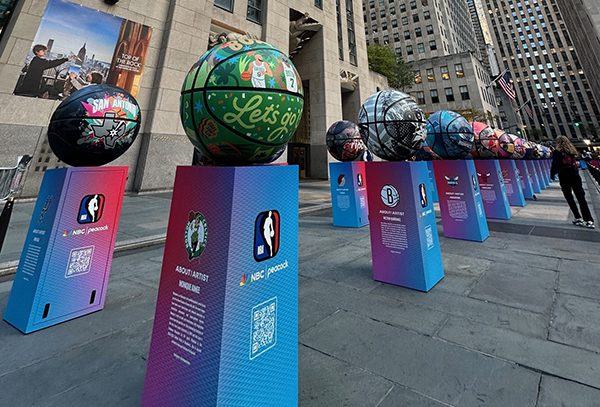In some situations, the importance of a comma cannot be overstated. At the most extreme, commas can save lives. To wit, "Let's eat, Grandpa." vs. "Let's eat Grandpa."
In other situations, the placement and meaning of a comma requires closer examination. This is the case when we look at responses to reports that B2B buyers are moving as much as 70% of the way through the sales funnel before they engage directly with sales representatives.
To create a context for discussion, let's focus on B2B lead generation for complex sales that involve:
• Multiple decision makers (including C-level and senior execs) and influencers
• Large scale solutions at the enterprise or cross-department level
• High investments that can range up to six and seven digits
• Lengthy sales cycles that may take one to three (or more) quarters to close
If these B2B buyers gone through 70% of their buying journey before talking to a sales rep, that means they have already:
1. Identified and prioritized their business problems
2. Assessed the impact these problems are having on their organizations
3. Formulated business objectives that require a new solution
4. Built a business case for an alternative to the status quo
5. Identified features needed in a new solution
6. Identified potential solution providers
With these six steps occupying the initial 70% of their buying journeys, the final 30% looks like this:
7. Reach out to connect with sales reps at identified providers
8. Evaluate options and address concerns
9. Make a decision
How are companies responding to this situation? Often in one of two ways, and that brings us back to the importance of comma placement
1. "So what?"
One way of addressing the shift in buyer dynamics would be to say, "So what?"
Without the comma, the question becomes an expression of indifference as marketers and sales teams continue with business as usual. The ongoing lack of alignment between the two groups, as well as the incorrect focus on lead quantity over lead quality, results in wasted resources, wasted dollars and lost deals. The "average and laggard" beat goes on.
Meanwhile, relentless competitors—some with better name recognition, larger marketing and sales budgets, and newer and less expensive offerings—are executing on marketing and sales initiatives that get them into deals early, build relationships and deliver wins.
2. "So, what?"
Another way of responding to the shift in buyer dynamics during the complex sale would be to insert a comma and pose the question, "So, what?"
The meaning here is along these lines: "So, reports indicate that B2B buyers are getting 70% of the way through their buying journeys prior to engaging with one of our sales reps. What should we do about this?"
Conventional wisdom has it that providers shift marketing mixes to dramatically increase inbound marketing to get found by prospects and entice them into self-identifying with their contact information. They can then be added to marketing automation applications that will score them and nurture them with the right content. At the right point, this reasoning goes, the prospect will reach out directly, or a sales rep will initiate contact based on the buyer's behavior and lead score.
Sounds good, but there are a number of limitations when overcommitting to this approach.
The risk in overreliance on inbound marketing and marketing automation
In B2B, relying too heavily on inbound marketing and marketing automation can result in lost deals. There are five potential areas of risk:
1. Market coverage
Successful marketing and sales strategies are grounded in correctly defining the target market and then deploying 100% coverage. Inbound dependence on buyers reacting to content before action occurs cannot ensure 100% market coverage. Can you afford to trust that your ideal buyers will come to you?
2. Senior decision makers
C-level and other senior executives respond to marketing automation at lower rates, if at all. Not every executive wants to be treated like the human equivalent of a pinball, getting your attention only after hitting the right bumpers and scoring enough points.
3. Deal size
Particularly in the fields of technology and healthcare, inbound programs often can deliver opportunities with lower-level decision makers that close at smaller deal sizes.
4. Early buying cycle
Inbound marketing works best when time is not an issue—it takes time to develop content, promote it, and get prospects to find and engage with it.
5. Late buying cycle
Because inbound marketing generates contacts and supports self-education over a period of time, opportunities deep in the current funnel can be missed. Outbound initiatives can effectively interrupt competitors' positions in active buying stages to gain client wins.
In a nutshell, the risk is that the right high-value prospects will not be identified nor engaged early if too much emphasis is placed on inbound marketing and marketing automation.
Don't Wait to Market—Start Now
Any company selling a solution or service (unless it is highly commoditized) will be column fodder if they wait until 70% of the buying decision is made before they engage the prospect. Waiting for this to happen ensures that you are going to lose the business to a smarter vendor that has gotten in earlier and baked the process against you.
The correct path for marketing and sales teams wanting to achieve above average results is to correctly balance inbound activity with a proactive outbound prospecting efforts.
Characteristics of a proactive outbound strategy include:
• A shift in focus from high-volume, low cost-per-lead initiatives to ones that focus on delivering the right number of highly qualified buyers to sales.
• A market definition strategy that leverages market segmentation and testing to identify high-value prospects.
• A dedicated group inside or outside the company to cover the defined market with lead generation, lead qualification and lead nurturing activity.
• A multi-touch, multi-media and multi-cycle contact strategy grounded in personal contact.
To buy into this idea and too heavily shift emphasis to an inbound strategy can only mean that competitors investing in proactive initiatives are getting engaged with your ideal prospects way before you—and getting more wins as a result. Rather, find the right mix that includes a significant commitment to proactive outbound approaches. This will allow you to fully cover your market, find the right decision makers early, and build relationships that increase the probability of influencing outcomes in your favor.
Dan McDade (dan.mcdade@pointclear.com) is president and CEO of PointClear LLC.
 Network
Network

